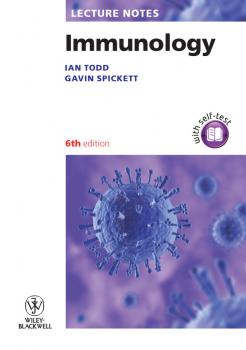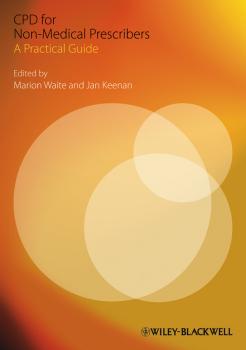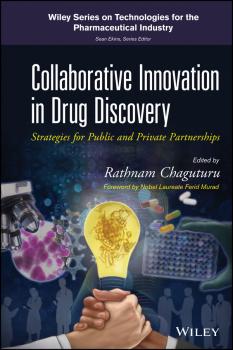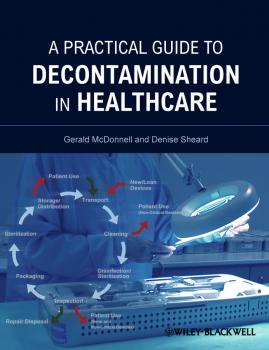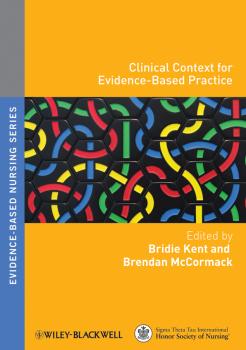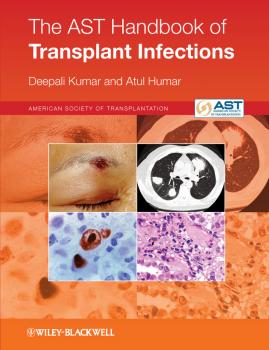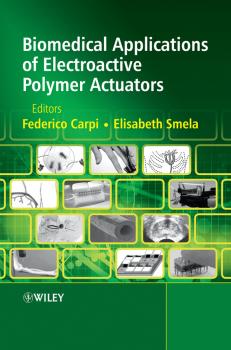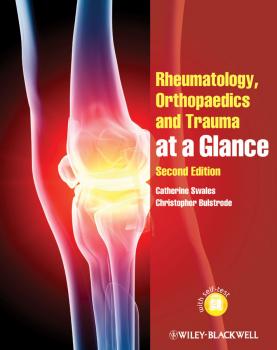ТОП просматриваемых книг сайта:
Медицина
Различные книги в жанре Медицина, доступные для чтения и скачиванияАннотация
This introductory text provides a student-friendly review of essential immunity and immunopathology topics. Key concepts are introduced in an incremental fashion to provide a thorough overview of the field. Closely tailored to the undergraduate immunology curriculum, Part 1 outlines basic immunology, while Part 2 covers more disease-related and clinical aspects. The new edition of this popular title features a fully updated overview of the roles and regulation of the cells and molecules of the immune system. Key point summaries have been expanded, and key objectives added to the start of each chapter, to help the reader focus on the essential ‘take-home’ messages. Readers can then test themselves using the brand new self-assessment section containing problem-solving questions and extended matching questions (EMQs). Including simple, memorable illustrations and quick reference tables, Lecture Notes: Immunology provides the perfect distillation of information for easy recall at revision time, and is ideal for both the novice and those with some prior knowledge of the field.
Аннотация
In this new era of healthcare, the importance of Continuing Professional Development cannot be underestimated. Non-Medical Prescribers have a responsibility to themselves, their employer and their patients to keep up-to-date with developments in this fast-moving area of healthcare. This book looks at the current context of CPD in this area and provides guidance for facilitation. The book is divided into three clear sections. The first looks at general principles of CPD and considers overarching and organisational issues such as clinical governance. The second section looks at specific approaches adopted by individuals/trusts to facilitate CPD, for example e-learning and how to keep up-to-date with pharmacology. The final section is a resource section which includes a number of usable documents relating to each chapter which identify further resources and include practical ideas, tools and objects. Includes legal and professional frameworks Tied in closely with the latest government guidelines and standards, including guidance from the NMC as well as the Royal Pharmaceutical Society of Great Britain (RPSBG) Includes contributions from health professionals from a variety of backgrounds Suitable for non-medical prescribers, as well as their managers, practice managers and prescribing leads responsible for providing CPD
Collaborative Innovation in Drug Discovery. Strategies for Public and Private Partnerships - Murad Ferid
Аннотация
Can academia save the pharmaceutical industry? The pharmaceutical industry is at a crossroads. The urgent need for novel therapies cannot stem the skyrocketing costs and plummeting productivity plaguing R&D, and many key products are facing patent expiration. Dr. Rathnam Chaguturu presents a case for collaboration between the pharmaceutical industry and academia that could reverse the industry's decline. Collaborative Innovation in Drug Discovery: Strategies for Public and Private Partnerships provides insight into the potential synergy of basing R&D in academia while leaving drug companies to turn hits into marketable products. As Founder and CEO of iDDPartners, focused on pharmaceutical innovation, Founding president of the International Chemical Biology Society, and Senior Director-Discovery Sciences, SRI International, Dr. Chaguturu has assembled a panel of experts from around the world to weigh in on issues that affect the two driving forces in medical advancement. Gain global perspectives on the benefits and potential issues surrounding collaborative innovation Discover how industries can come together to prevent another «Pharma Cliff» Learn how nonprofits are becoming the driving force behind innovation Read case studies of specific academia-pharma partnerships for real-life examples of successful collaboration Explore government initiatives that help foster cooperation between industry and academia Dr. Chaguturu’s thirty-five years of experience in academia and industry, managing new lead discovery projects and forging collaborative partnerships with academia, disease foundations, nonprofits, and government agencies lend him an informative perspective into the issues facing pharmaceutical progress. In Collaborative Innovation in Drug Discovery: Strategies for Public and Private Partnerships, he and his expert team provide insight into the various nuances of the debate.
Аннотация
Prevention is the first line of defence in the fight against infection. As antibiotics and other antimicrobials encounter increasing reports of microbial resistance, the field of decontamination science is undergoing a major revival. A Practical Guide to Decontamination in Healthcare is a comprehensive training manual, providing practical guidance on all aspects of decontamination including: microbiology and infection control; regulations and standards; containment, transportation, handling, cleaning, disinfection and sterilization of patient used devices; surgical instrumentation; endoscopes; and quality management systems. Written by highly experienced professionals, A Practical Guide to Decontaminationin Healthcare comprises a systematic review of decontamination methods, with uses and advantages outlined for each. Up-to-date regulations, standards and guidelines are incorporated throughout, to better equip healthcare professionals with the information they need to meet the technical and operational challenges of medical decontamination. A Practical Guide to Decontaminationin Healthcare is an important new volume on state-of-the-art decontamination processes and a key reference source for all healthcare professionals working in infectious diseases, infection control/prevention and decontamination services.
Аннотация
The Evidence-Based Nursing Series is co-published with Sigma Theta Tau International (STTI). The series focuses on implementing evidence-based practice in nursing and midwifery and mirrors the remit of Worldviews on Evidence-Based Nursing, encompassing clinical practice, administration, research and public policy. Clinical Context for Evidence-Based Practice provides insights into the key contextual issues to be considered in the implementation and assessment of evidence-based practice. Increasingly, implementation research is demonstrating that for evidence to be successfully implemented into practice, the context of practice needs to be considered. Clinical Context for Evidence-Based Practice addresses professional, educational, and organizational contextual issues that impact on the implementation of evidence into practice and the bringing about of practice change. Practical strategies that have been used effectively to overcome these contextual issues in a range of healthcare settings are identified. Specific contextual issues in different care settings are also addressed e.g. acute care, primary health care, peri-operative settings, paediatrics, aged care, mental health, midwifery. Each chapter is written by an internationally known and respected author, with experience of developing or reviewing contextual strategies that have an impact on the implementation and utilisation of research in practice. They explore how gaining a better understanding of context made a difference to the implementation process or outcome and address the potential to transfer different approaches to a range of healthcare settings. An informative, practical resource for nurses and other health care professionals Explores context-related models and approaches to implementation Informs implementation and enables effective decision making Critically appraises contextual factors across the spectrum of care Explores future directions and implications Includes case examples
Аннотация
Whether you need to manage a post-transplant infection or reduce the possibility of infection, you will find effective guidance in this handbook. The work of the American Society of Transplantation Infectious Diseases Community of Practice, this reference exclusively uses tables and flowcharts to speed up decision making. This distinguished group of investigators and teachers provide point of care information on optimum management of infection in adult and pediatric organ and stem cell transplant patients. The unique tables and flowcharts are devised by the authors, backed up with extensive references, making the book a fully researched yet easy to use guide. The fast growing specialty of transplantation will be well served by this book as increasing numbers of successful procedures mean transplant teams have to be ever more alert to the possibility of and need for action in the event of ensuing infection.
Аннотация
How do our muscles produce energy for exercise and what are the underlying biochemical principles involved? These are questions that students need to be able to answer when studying for a number of sport related degrees. This can prove to be a difficult task for those with a relatively limited scientific background. Biochemistry for Sport and Exercise Metabolism addresses this problem by placing the primary emphasis on sport, and describing the relevant biochemistry within this context. The book opens with some basic information on the subject, including an overview of energy metabolism, some key aspects of skeletal muscle structure and function, and some simple biochemical concepts. It continues by looking at the three macromolecules which provide energy and structure to skeletal muscle – carbohydrates, lipids, and protein. The last section moves beyond biochemistry to examine key aspects of metabolism – the regulation of energy production and storage. Beginning with a chapter on basic principles of regulation of metabolism it continues by exploring how metabolism is influenced during high-intensity, prolonged, and intermittent exercise by intensity, duration, and nutrition. Key Features: A clearly written, well presented introduction to the biochemistry of muscle metabolism. Focuses on sport to describe the relevant biochemistry within this context. In full colour throughout, it includes numerous illustrations, together with learning objectives and key points to reinforce learning. Biochemistry for Sport and Exercise Metabolism will prove invaluable to students across a range of sport-related courses, who need to get to grips with how exercise mode, intensity, duration, training status and nutritional status can all affect the regulation of energy producing pathways and, more important, apply this understanding to develop training and nutrition programmes to maximise athletic performance.
Аннотация
Giving fundamental information on one of the most promising families of smart materials, electroactive polymers (EAP) this exciting new titles focuses on the several biomedical applications made possible by these types of materials and their related actuation technologies. Each chapter provides a description of the specific EAP material and device configuration used, material processing, device assembling and testing, along with a description of the biomedical application. Edited by well-respected academics in the field of electroactive polymers with contributions from renowned international experts, this is an excellent resource for industrial and academic research scientists, engineers, technicians and graduate students working with polymer actuators or in the fields of polymer science.
Аннотация
Rheumatology, Orthopaedics and Trauma at a Glance is the new edition of The Musculoskeletal System at a Glance. The book now includes not just basic anatomy, but also features presenting complaints and patient examination and reflects the increased coverage of rheumatology, making it relevant for students at all levels. Rheumatology, Orthopaedics and Trauma at a Glance Expands its coverage of rheumatology to include all major topics on the medical student curriculum Includes fully illustrated chapters on examination of each part of the musculoskeletal system Provides self-assessment case studies to test knowledge and provide clinical context Consolidates all information relating to the musculoskeletal system in one title Rheumatology, Orthopaedics and Trauma at a Glance is ideal for all medical students studying the musculoskeletal system or taking an orthopaedics or rheumatology rotation.
Аннотация
This unique resource brings together valuable information on breed-related diseases in one quick-reference volume. Divided into one section for dogs and another for cats, inherited and other prevalent disorders are listed breed-by-breed. The final section describes each of the disorders in more detail. All the information is drawn from high-quality sources, including research journals and veterinary texts, with extensive references provided. This invaluable reference helps veterinary professionals to advise clients on their choice of breed and what problems to look out for. Whether you're a veterinarian, geneticist, a breeder, or a pet owner, this fully-referenced book will save you hours of searching through scattered literature.

